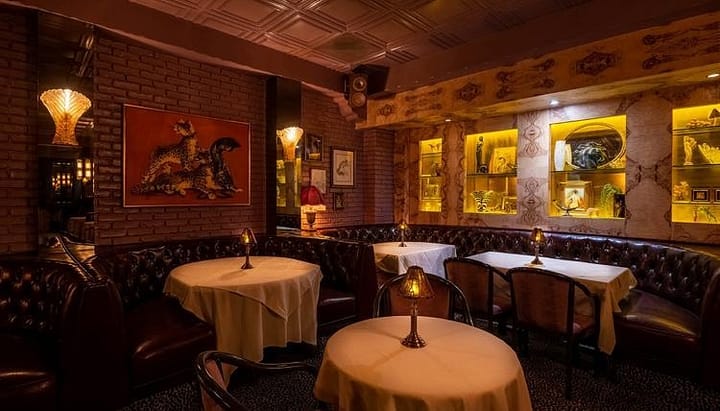LUCY BULL: ASH TREE
David Kordansky Gallery
Los Angeles
May 11 – June 15, 2024
This is a really good summer for art in LA.
It was white text against black, a screen-grab from an Instagram story a friend shared with me. We laughed like crazy.
“The state of criticism,” my friend said.
“Yeah,” I said. “But what if she’s right?” I might have actually meant it. Not that this dim generality captures the state of things — in Los Angeles or anywhere — which, notwithstanding some bright spots, a lot of us see as characterized by a cautious market calling the tune of conservative art. But there was something in the phrasing, the way it put the stress on the season. To be able to look upon the sweltering, blood-soaked summer of 2024, a summer that by any measure should appear really bad, and see it as really good, if only for art in L.A. — that was enviable. Of course, it’s part of the catechism that, in times of horror, art can comfort and inspire, feeding a little life with dried paint, so what was my fucking problem? Couldn’t I feel the balm of art? Maybe just want to feel it? Even if I couldn’t, I reasoned, I could slip in among the faithful, which at a minimum was a promising start for a column.
I don’t remember anyone mentioning such consolations in line for the antipasto spread at La Dolce Vita in Beverly Hills. It was the after-party for the Lucy Bull opening at David Kordansky Gallery in May. A youngish painter of big abstract paintings, Lucy lives here and is one of those people whom everyone here knows, and here they all were. It was hard to breathe. There was no room to move. I looked in envy at everyone crowded in the leather banquets, and they smiled back in what had to be a mix of pity and pleasure.
With exposed brick and tin ceiling tiles, La Dolce Vita trades on a peculiarly L.A. kind of double nostalgia: an early-sixties pastiche of old Downtown New York, revived from COVID-era closure by a hospitality group playing up the Rat Pack provenance. The cubed provolone and ham and pepperoncini seemed like they, too, might be a simulation of another era, or else an emblem of high interest rates.
Filling my plate with olives, I spotted a suspiciously empty seat at a two-top in the corner and there found myself chatting with a collector in town for the night from Scottsdale, Arizona. He asked if I could point out Lucy Bull, and I said that I couldn’t see her but she was bound to be here somewhere, that she was wearing a blue transparent dress. He said he owned a Lucy Bull, but just one. His favorites were Mark Bradford and Mark Grotjahn. He had a bunch of those. “Look at this Bradford,” he said, pulling out his phone, though for some reason he said I couldn’t zoom in.
“It’s nice,” I said.
“Who do you like?” he said. Collectors always ask this, and for some reason, when they do, I can never think of any names.
“I like Bradford,” I said. “And Grotjahn.”
“That’s good,” he said.
I asked if he thought this was a good summer for art. “Sure,” he said. “But you know what’s ridiculous? How collectors are treated.” He proceeded to tell me how he’d been called out in an art market blog for selling a painting at auction that he’d bought a few years ago. In fact, he’d bought two, as the gallery had required, one to keep and one to donate to a museum, a common practice known as buy one give one. But then the painter had been rude to him and now he didn’t want to have the thing anymore. “They act like it’s some big crime,” he said. “Everyone does it, but you’re supposed to pretend like you’re never gonna sell. And I almost never sell. I don’t buy art to make a profit.” He complained, too, about galleries refusing to sell to people or how they’d claim not to have work and make you wait around and then sell you one you didn’t really want. It’s a boilerplate collector’s complaint. “I could never get away with running a business like this. I’d be in jail.” I asked what line of work he was in. “Investments” was all he would say.
“But you put up with it,” I said.
He shrugged. “I love art,” he said. “I support these artists. But none of this would be possible without us.”
“Us,” I said.
“Well,” he said, “sure.” Then, remembering something, he said, “I was at Grotjahn’s studio today. He’s working on something big. Something totally new.”
“Not a starburst?” I said.
“Not a starburst,” he said.
“Did you like it?” I said.
He thought for a moment. “Yeah. I told him I liked 85 percent. I wasn’t totally sure about the rest.”
“Well, that’s pretty good,” I said. “It’s more than half.”
“Yeah,” he said. “A lot more.”






